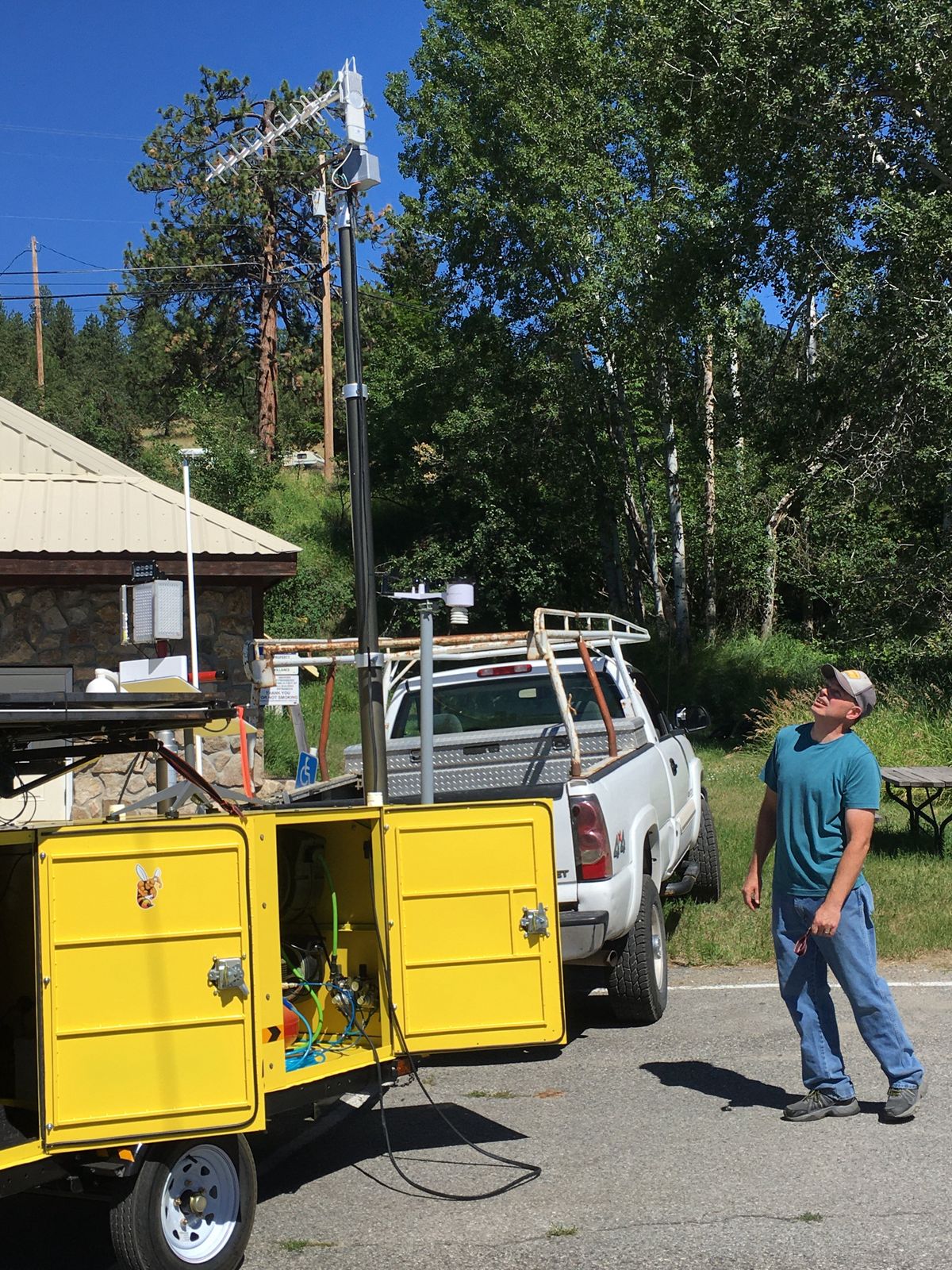Nomadic Broadband Unit can supply off-grid communications to emergency responders

REPUBLIC, Washington – For crews fighting wildfires in remote areas like Ferry County, real -time communication to and from the front line is vital. A new invention developed by Washington State University Extension in Ferry County can connect emergency responders to high-speed internet in off-grid areas and during power outages.
The Nomadic Broadband Unit uses a satellite to connect to the internet. Mounted on a trailer, the unit can be towed by a pickup truck and can run self-sufficiently for up to 45 days powered by solar panels and a backup propane generator.
“There’s so much potential for a unit like this,” Ferry County Emergency Management Director Steve Bonner said. In rugged terrain where coverage is spotty, it could be used to relay information between firefighting camps. It could also be used for a medical mobile facility, real-time traffic monitoring and other disaster relief efforts.
The project is a collaboration between Ferry County, WSU Vancouver, University of Washington and Microsoft. Their team tested the unit in a demonstration in the Colville National Forest last week.
“We’ve all seen how important internet connection is when we talk about schooling and online learning,” said Mike Egan, director of Microsoft TechSpark, a program that aims to foster economic opportunity through partnership with rural communities. “We talk about job creation, how to create economic stability through connection, but nowhere is it more important than during emergency disasters and during some kind of real life need. That kind of timeliness is so important.”
Funding from Microsoft and the Washington state Department of Natural Resources launched the project in 2018. A 2022 grant from Microsoft funded construction of the latest prototype.
The broadband unit is much more than just an internet hot spot. It is a multifaceted communications hub with radios, a weather station, a drone docking station and a remote control camera.
Ferry County Commissioner Nathan Davis, a hands-on amateur inventor with a background in information technology, designed most of the unit while working with university students and faculty to develop the software. “This is a fun project for me,” he said.
He recognized the need for better connectivity after a 2015 wildfire caused a power outage. “We could not communicate out of the county for almost half a day,” he said.
“There are very few public officials we run into across the U.S. that have both the technical know-how and that technology gift to be able to do this alongside their work,” Egan said of Davis.
A satellite dish mounted to the top of the trailer accesses the internet through Starlink, a satellite constellation operated by SpaceX.
The unit has two extendable masts with different functions. The taller 18-foot mast holds a backup internet antenna and wireless access point. The Wi-Fi has a 600 -foot radius and can support more than 100 devices.
“A fire camp could essentially have communication 24/7 without having to worry about it,” Davis explained. “They can communicate with family, with headquarters.”
The shorter 12-foot mast holds a camera with LED and infrared floodlights. At night the lights can illuminate a range of 200 feet. The 360-degree tilt, pan and zoom camera can be controlled remotely from anywhere around the world. This gives the ability to monitor fires or flooding, and to promptly issue evacuation notices if needed.
The weather station can help gauge fire conditions with a particulate scanner that measures smoke or dust levels in the air.
A large LED TV screen attached to the back can be used for video conferencing, to display messages or to mirror any device.
An expandable solar array tracks the sun from east to west, charging batteries during the day. The generator kicks in when the batteries run low.
The team continued adding capabilities as they went.
“As long as you have access to power and internet, you can add so many different things,” Davis said.
This is the team’s second prototype. The first unit occupied a truck bed camper, with an office inside. It worked, but it was hot and cramped. So they redesigned it to be smaller and more accessible, beginning the second prototype in February this year. Eventually, they envision developing a unit that can be carried in a backpack.
Other mobile units like this exist on the market, but the cost is prohibitive starting at $100,000. “Communities like this can’t afford that,” said Trevor Lane, director of WSU Ferry County Extension. “They can’t even think about that.”
The prototype costs about $40,000 in parts, software and labor, Lane said. “It’s about affordability, accessibility and adoption.”
WSU Extension will share the plans free of charge on the open source hosting website GitHub.
“People can pull the documentation, the inventory list, the schematics, the blueprints,” Lane said. “They can read about it, study it and then they can build their own.”
While WSU Extension in Ferry County owns the prototype unit itself, they plan to loan it out locally when needed.
Moving forward, Lane said the team wants to build another prototype using automation and artificial intelligence.
“We’re just now beginning to realize the Internet of Things that go with this,” Lane said.